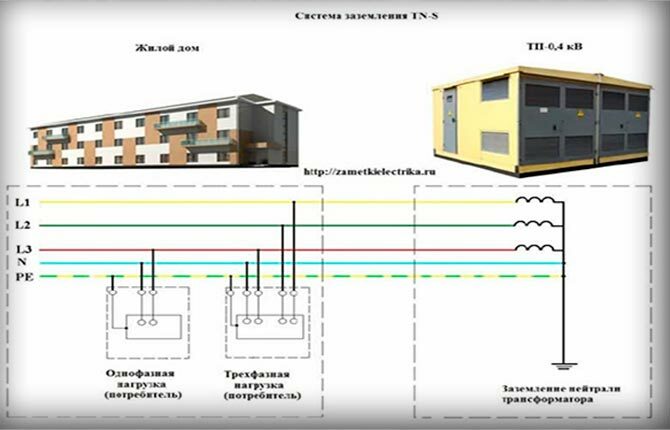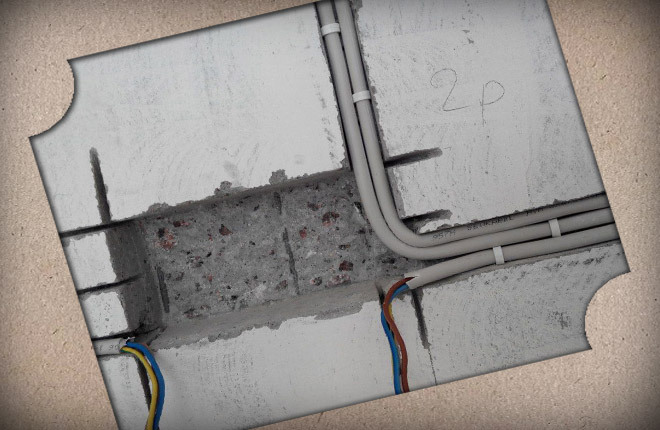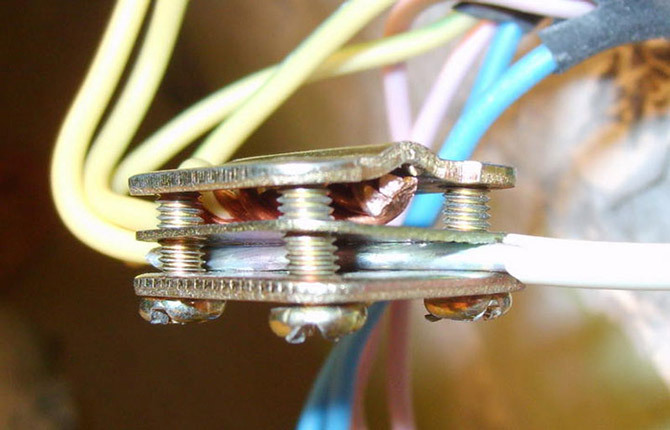Let's do the theory, wait a little. VashTehnik portal along with abstruse maxims, calculated to be understood by the pros, will provide the method of five fingers. Did not hear? Just like five fingers. First we will discuss the types of transistors, then we will tell you what can be done with a multimeter. Consider the standard hFE sockets( we explain what it is), a technique for replacing a circuit through a junction of several diodes. Tell us where to start. Understand how to check the transistor with a multimeter, or. .. Let's, perhaps, without the "or".Let's begin, to firmly distinguish the MOS transistor from the pug, razstolchem theory.
Types, classification of transistors
Avoid exploring the wilds. Know the simple rule: in bipolar transistors, the carriers of both signs are involved in creating the output current, in the field one. Definition of wise men. Now we work with our fingers:

Device of transistors
- Field-type transistors act as the beginning. When the Beatles took the stage, semiconductors began to come in to replace the vacuum triodes. In short, the pnp transistor is a crystal layer rich in positive carriers( silicon, germanium, impurity conductivity).Conducting physics lessons, the teacher often told how V-valent arsenic doped silicon lattice, forming a new material. We add that the positive p-regions are fenced off by a narrow negative( n-negative).As a lump in the throat. The narrow isthmus, called the base, refuses to allow electrons( in our case, rather, holes) to flow in the right direction. A small negative charge appears on the control electrode, the collector holes( the upper p-region on traditional electrical circuits) can no longer be held back, literally tearing towards the applied voltage. Since the base is thin, the carriers fly through the isthmus, gaining more speed, reaching the emitter( lower p-region), they are carried away by the potential difference created by the supply voltage. Typical school explanation. A relatively small voltage of the control electrode is able to regulate the speed of a strong flow of holes( positive carriers) carried along by the field of the supply voltage. Based on this technique. Electrons move towards the holes, transistors are called bipolar.
- Field-effect transistors are equipped with a channel of any type of conductivity, separating the source and drain areas( see figure above).The control electrode is called the gate. Moreover, the main material of the substrate, the gate is opposite to the channel, source and drain. Therefore, a positive voltage( see figure) prohibiting the course of charges through a transistor. Plus, it will pull away( into the p-region) the available electrons. Field effect transistors in electronics are used much more often. In the figure, the gate is electrically connected to the crystal, the structure is called the controlling p – n junction. It happens that a region is isolated from a crystal by a dielectric, which often serves as an oxide. Pure water MOSFET transistor, in Russian - MOS.

Check circuit of the transistor
With a multimeter, in the normal mode, bipolar transistors are checked. If the tester supports this option, often referred to as hFE, a circular connector is mounted on the front panel, divided by a vertical line into two parts, with 4 sockets labeled as follows:
- B - base( English Base).
- C - Collector( English Collector).
- E - emitter( eng. Emitter).
Emitter sockets for two, to take into account the layout of the findings of the body. The base can be from the edge, in the middle. For convenience, done. There is no difference in which socket to insert the leg of the emitter of a bipolar transistor. A few words how to use.
Testing the bipolar transistor with a multimeter in the normal mode
In order for the test socket of the bipolar transistors to start working( to measure), we put the tester into hFE mode. Where did the letters come from?h - concerns the category of parameters describing a quadrupole of any type. It is not important to know what the concept implies - just understand: there is a whole group of h-parameters, among which there is one important person engaged in electronics. Called the current gain with a common emitter. Denoted by h21( or lower case Greek letter beta).
Digital mnemonics are poorly perceived by the human eye, so it was decided( abroad, of course) that F would indicate forward current amplification( forward current amplification), while E says that the measurement was carried out in a common emitter circuit( which is used by textbooksPhysics to illustrate the principles of the bipolar type transistors).There are many schemes of inclusion, each has advantages, parameters can be characterized through h21( some others mentioned in reference books).It is considered if the gain is normal, the radio element is 100% operational. Now readers know how to check the pnp transistor or npn transistor.
h21 depends on some parameters indicated by the instruction of the multimeter. Supply voltage 2.8 V, base current 10 mA.Next come the graphics of the technical documentation( data sheet) of the transistor, the professional knows how to find the rest. When you turn on the hFE mode, connect the legs of the bipolar transistor to the correct jacks, the current gain of the device appears on the display. Try to compare the reference data, making an amendment to the measurement mode( if necessary).It just sounds difficult, just do it yourself a couple of times, you will achieve results.
Checking transistors with a multimeter: abnormal mode
Suppose, for example, that a field-type transistor is in doubt. The famous Russian question in electronics is present. Begin to think. .. m-yes.
- The field effect transistor is unlocked or locked with a certain voltage sign. Discussed above. If you remember, they said that during a dial in the test leads of the tester there is a slight constant voltage. We will use in our tests. While the transistor on the board is difficult to make measurements, it is worth removing from the usual environment how non-standard techniques can be applied. It turns out that if an unlocking voltage is applied to the electrode, at the expense of some self-capacitance of the transistor, the area will be charged, maintaining the acquired properties. It is allowed to ring the electrodes between the source and drain. Resistance of the order of 0.5 kOhm will show: the field effect transistor is operational. It is necessary to shorten the base with other taps, the conductivity will disappear. Field effect transistor closed and valid.
- Bipolar transistors, field with the control p-n junction is much easier to check. In the first case, an element replacement circuit is applied with two diodes connected in the opposite direction( or vice versa).Let's give the unlocking voltage( p - plus, n - minus), having received a nominal value of 500 - 700 Ohms on the resistance meter. You can also call using hearing. Not without reason the diode is often drawn on the scale. Dialing is used to test performance. The voltage is enough to open the p-n-junction.

Preparation for testing the transistor
Sometimes you grab the compound transistor with your hands. Inside the case are several keys. Used to save space while increasing the gain( and tens, thousands of times, if it was a cascade scheme).So the Darlington transistor is set up. A protective zener diode is sewn into the case, protecting the emitter-base junction from overvoltage. Testing goes one way:
- Need to find detailed technical characteristics of the transistor( component).With the current scale of computerization will not be a problem. Even if the product is imported. The designations on the diagrams are clear, the terms are not complicated. Parameter hFE painted.
- Then study is conducted, analysis is performed. Breaking the scheme into simpler components. If a zener diode is switched on between the collector and emitter transitions, it is logical to start checking with it. At the initial moment the transistor is locked, the current of the multimeter will go, bypassing the protective cascade. In one direction, the Zener diode will give a resistance of 500-700 Ohms, in the other( if it does not penetrate) there will be a break. Similarly, we break apart the Darlington transistor, if you have an idea( discussed above).
Dialing mode will show the numbers. They say that the voltage drop, according to some information, the nominal resistance. We will try to bring experiments, solving the problem. Call known by the value of the resistance, obviously serviceable resistor. If the screen appears in ohms, nothing to think about. Otherwise, you can evaluate the current at the same time( dividing the display potential by the nominal).You also need to know, it is useful in the process of testing. Before starting work it is recommended to thoroughly examine the multimeter. Remove the instruction from the trash can, read.
The people are interested in the question of whether it is possible to check the transistor with a multimeter without soldering. Obviously, much is determined by the scheme. The tester simply applies the voltage, evaluates the arising currents. Based on the readings, the gain is calculated, serving as a criterion for suitability / worthlessness. Try to check the field-effect transistor with a multimeter from the included processor! Drop the hope of everyone entering here. It is not always possible to ring the field-effect transistor with a multimeter.
Split the bipolar transistor into diodes
The figure presented among the text shows the equivalent circuit of the transistor with two diodes. Allow us to consider the amplifying element, presenting the sum of two independent simpler ones. Non-amplified, exhibiting non-linear properties( non-uniformity of direct / reverse inclusion).
Power transistors of power circuits are powerless to open a scanty multimeter. Therefore, special schemes are used for testing devices. You cannot test a bipolar transistor with a multimeter directly.

Testing the diode
Testing conditional diodes replacing the
transistor Several techniques. You can try to measure the resistance of the standard scale Ω.The red probe must be applied to the p-area. Then the multimeter display will show a figure less than infinity. In the opposite direction, the result will be zero. The multimeter will show a break. Normal results are dialing diode.
If you use a special mode, the screen shows the size of the resistance in the forward direction, the break( usually the one in the left corner of the LCD screen) in the other. Please note - the figure contains explanatory inscriptions, where to lean the probe, getting an open pn junction. In the opposite direction, the device shows a break.


